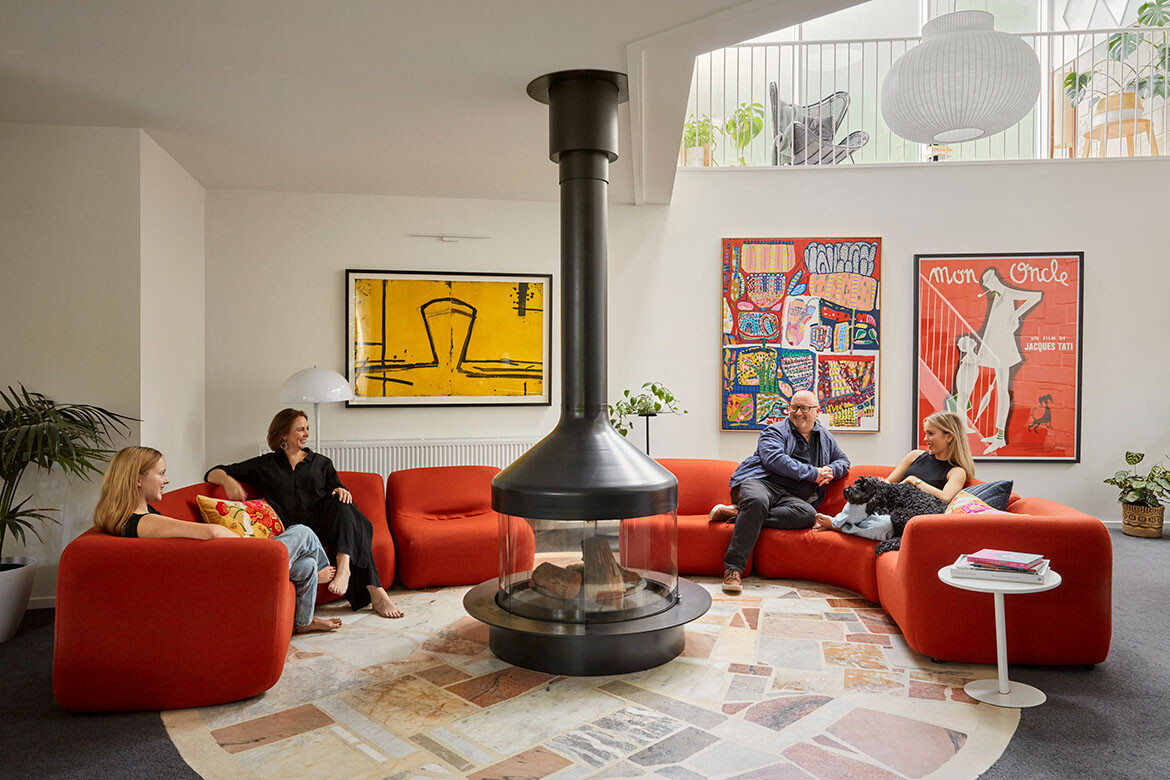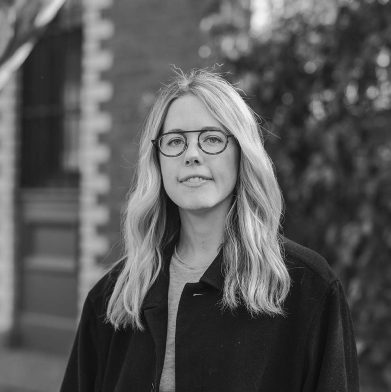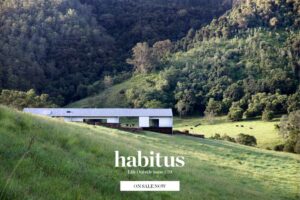There are some houses that you walk into and immediately feel at peace, transported out of the day-to-day. The home of Sarah and Richard Bryant, perched in the established treetops of Kew, Melbourne (Naarm), is precisely one of those places. But it was a far cry from being a mid-century sanctuary before they put their expert touch on it.
When the couple first came across the house during one of Melbourne’s extended lockdowns in March 2021, they could see the potential but weren’t exactly chomping at the bit to nab it. After it passed in at auction, they gave it another look.
While for many, the elaborate chandeliers, clunky additions and awkward spaces would be too much, Richard and Sarah saw how far it had deviated from its origins. It really had lost its soul as an exemplary mid-century case study.

The home is steeped in history, having originally been designed by mid-20th century architect Geoffrey Danne as his own home. As an architect’s own home, it was very much conceived as a testing bed for some unconventional thinking, encapsulating the architectural gusto of the time. “He’d been to Europe in the 40s, and they all came back post-War with ideas and experiments,” shares Sarah, pointing out an early incarnation of double glazing in a series of clerestory windows at the top of a gently curving, monolithic wall, as well as early examples of circular skylights being used in Melbourne.
The wall, too, was an experiment, with large chunks of glass scattered among mismatching pieces of stone. Sarah conspiratorially shares that, apparently, Danne salvaged the New Zealand limestone for this wall from the old Wilson Hall at Melbourne University, which burnt down in 1952.

“He was collecting random things and finding ways to use them throughout this house,” she says, adding: “In the afternoon, the sun comes through the glass shards and lights up the dining space.”
Created in a similar bowerbird-like fashion, the “original 1950s crazy pave tiling” was discovered in a few areas when the many layers of carpet and vinyl were pulled back. At the stair landing, around the fireplace and in the powder room. “We pulled it up and we’re just like, ‘oh wow’,” says Sarah. The tiling features off-cuts and kaleidoscopic pieces of natural stone ranging from Viola Calacatta to peach-toned travertine, presumably also salvaged and collected through Danne’s work.
The changes Sarah and Richard have made feel natural and bring a coherence back to the nonsensical additions that were shoehorned into the original.“There’s a rationalism to the planning; when we looked at the original 50s plans, the bedrooms are all along the eastern elevation and the plumbing was stacked vertically down the middle of the house,” says Richard, adding: “It was really rigorous in the thinking, laid out as economically as possible.”
The upper floor had the original kitchen, bathroom and bedrooms, while Danne occupied the lower level as a home office space. Bringing the whole into a more modern iteration, Sarah and Richard have taken what was the original kitchen area and transformed it into their main bedroom suite. The lower level living spaces and kitchen are now the hub of the home, where a new elegant bench extends the kitchen out and creates a multi-purpose zone.

Sarah and Richard also drew inspiration from the remnants of what they discovered in the unearthing process. The pink stone on the island bench is a reference to the pink-toned stone found in the crazy pave.
Other decisions speak to their skill and design knowledge. For instance, a new, white powdercoat steel balustrade brings just the right reference to mid-century without feeling contrived. In fact, it could easily be missed as new because it harmonises so perfectly.
It’s hard to imagine this home having the same mood, the same thoughtfulness, if it had been undertaken by anyone else. Plus, there’s an echoing symmetry in the story itself – an experimental home of an architect, reinvigorated by architects as their own home 70 years later.

Moments of quirk are everywhere, but they’re rounded out with an overarching sense of serenity. The peacefulness is as much an expression of Richard and Sarah’s personalities as it is a result from the architecture or the surrounding greenery.
That calming presence and ability to let go of worries outside their control is something that has helped them grow their architectural practice organically over the past 15 years. Now a team of 12 architects, the studio predominantly works across education and residential.
As they recall the beginnings of Bryant Alsop Architects there’s a sense of everything naturally unfolding – or as Richard says, “one thing, or project, just led onto another”.
In 2008, the effects of the Global Financial Crisis were well and truly being felt across the construction industry. During that time Sarah was at home with their second child. “I had no maternity leave, no part-time work. I was at home, and someone reached out and asked if I could work on a house they’d just bought,” and things just kept flourishing from there.
While the practice now has a strong portfolio and pipeline of work across their two key sectors, the pair’s ability to adapt as they go has seen them find the sweet spot. “There’s an underlying belief that whatever comes our way, we’ll work it out,” says Sarah.
It’s an attitude that certainly helped as they kept unravelling the layers of this home. What they have created together is the ultimate reflection of their personalities and practice – thoughtful, creative and overflowing with design intent.
Project details
Bryant Alsop Architects – bryantalsop.com.au
Original architect – Geoffrey Danne
Location – Kew, Melbourne, Australia
Traditional custodians – Wurundjeri people
Photography – Jack Lovel
This story originally appeared in Habitus #58 – the creative spaces issue.














